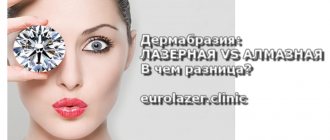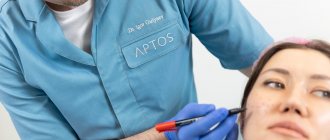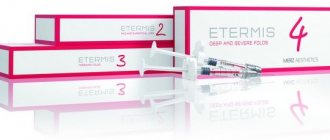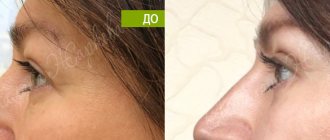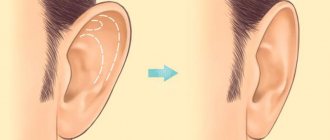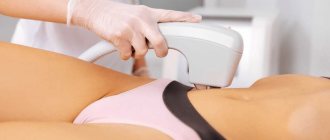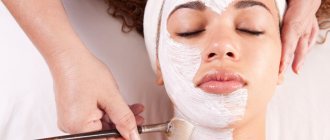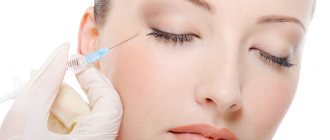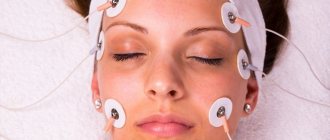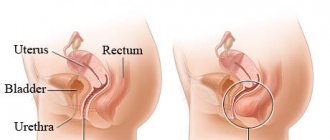Ultraphonophoresis is a physiotherapeutic procedure related to the field of cosmetology. It is based on hardware ultrasound effects on the inner layers of the skin with the parallel use of cosmetics. Skin tissue is exposed to high-frequency vibrations, the size of which exceeds sixteen kilohertz. As a result, hyperpermeability of skin pores occurs, medications begin to be well absorbed internally, and their effectiveness increases. Indications and contraindications for facial ultraphonophoresis.
Characteristic
What is ultraphonophoresis? This technique involves a combination of ultrasound waves and a medicinal composition. The solution is applied to the skin, and then microvibration is performed using a wave method. Ultrasound plays a leading role in such manipulation. Thanks to it, the absorption capacity of the skin and vascular system increases significantly. Diffusion - distribution, penetration deep into the molecules of the drug, increases many times over.
A correctly selected drug will be the key to successful therapy, since ultrasonic waves will ensure its penetration into the capillaries. Ultraphonophoresis for therapeutic purposes is usually done with drugs that dilate blood vessels and relieve inflammation, as well as with anesthetics. Hormonal and antibacterial agents are often used.
In cosmetology, the main object of application of ultraphonophoresis is the face and areas close to it (neck, décolleté). The procedure with ultrasound allows you to speed up metabolism in cells, enhance tissue regeneration, relieve swelling, as well as relieve inflammation and relieve pain. When drugs get into the inner layer of the skin, they have an increased concentration. Over time, they dissolve and enter the blood vessels.
What medications are used in ultraphonophoresis?
It is possible to achieve the best effect of healing and rejuvenation of facial skin through the use of special medicinal and cosmetic compositions. The product is selected individually, taking into account the indications.
The most popular methods:
- Ultraphonophoresis with hyaluronic acid - this procedure gives a powerful effect of moisturizing the skin.
- Gels with vitamin complexes effectively tone the skin and saturate it with nutritional components.
- Antibacterial agents are successfully used in the fight against acne.
Products to combat age-related changes - moisturize, tone the skin, and help smooth out wrinkles.
When shown
Indications for the use of ultraphonophoresis both in the medical field and in cosmetology are available in the following cases:
- With submandibular or cervical lymphadenitis;
- With frequently recurring sore throat;
- When treating the consequences of injuries, facial skin hematomas, infiltrates;
- For chronic diseases and inflammations in the joints or skin - arthritis, arthrosis, osteochondrosis, skin fibrosis.
The procedure is carried out using gels and aqueous solutions of medications.
In addition to skin exposure, ultraphonophoresis is carried out through the mucous membranes of the mouth, maxillary sinuses, etc. The number of appointments for sessions and the period of the procedure are chosen by the doctor, depending on the patient’s condition.
Fact 2. The procedure is not suitable for everyone
The principle of operation of the scrubber limits the possibilities of its application. There is no point in using the device if there are multiple and deep sebaceous plugs and heavily contaminated skin. The procedure is indicated only for those who have shallow blackheads, and the oiliness of the skin is slightly increased. Or if, with problem skin, mechanical cleaning has to be performed frequently, but due to the patient’s discomfort or low pain threshold, the cosmetologist from time to time replaces this painful procedure with a gentle, more delicate ultrasound procedure.
During the procedure, the doctor may open or remove several inflammatory elements, but if there are many of them, such cleaning cannot be performed. At the same time, the hardware technique is not at all intended to combat deep contamination of the epidermis and inflammatory elements. It is designed to lightly exfoliate the skin, remove a layer of dead cells, and get rid of superficial sebaceous plugs. You cannot apply pressure to deeply clogged pores or inflammatory elements with the device, as this may leave noticeable marks on the skin.
How it is used in cosmetology
Ultraphonophoresis in cosmetology is often used as a rejuvenating and nourishing agent for the face. For the patient's body, it is used to reduce and get rid of skin defects. The drainage technique allows you to achieve good microcirculation in the skin. It becomes smooth, elastic, and rejuvenated, which is confirmed by reviews and photos.
Such procedures significantly reduce subcutaneous fat. Such stimulation of skin tissue causes increased production of collagen and elastin. According to reviews, there is absolutely no painful discomfort during the manipulation.
Carrying out
To prescribe therapy, it is best to contact a specialized clinic. Portable devices can be purchased at the store, but only an experienced specialist will be able to properly carry out the treatment. The choice of a specific device model and auxiliary substances depends on the indications. In most cases, ultraphonophoresis is used to inject corticosteroids, painkillers and herbal medicines into the skin.
Stages of implementation:
- Applying an ointment containing the substances necessary for administration to the skin.
- A sensor is applied to the skin. Circular movements are made. The duration of therapy varies from 3 to 15 minutes.
- After the procedure, the ointment is removed.
Treatment is carried out for 4-8 weeks. During the consultation, the doctor will tell you about the terms of service, preparation rules and prices.
When to use
Cosmetology salons use the ultraphonophoresis method for the following defects, ailments of the face and body:
- To smooth out wrinkles;
- To reduce the layer of cellulite;
- For resorption of scar tissue;
- For the rehabilitation of injured or burnt skin
For this, polyunsaturated acids and preparations that activate metabolism in tissues are actively used: natural and essential oils, extracts and infusions of medicinal herbs, various vitamin supplements. In addition, elastin and collagen are widely used
Physiotherapy can be called one of the gentle and gentle methods of influencing the body. The duration of the prescribed therapy is determined by a cosmetologist. Medical centers currently use the latest devices and progressive drugs to achieve maximum efficiency.
In addition, it is necessary to familiarize yourself with contraindications for patients due to their health status. To do this, you should first consult with a cosmetologist.
Medicines used
Many different medications and compounds are used to carry out ultraphonophoresis, which are applied to the surface of the skin. The use of kojic acid helps fade pigment spots and make the complexion more even. Calendula, camphor, azulene and chamomile are included in ointments and gels to reduce inflammation.
When fighting wrinkles and age-related changes, patients are recommended to use hyaluronic and glycolic acids. Vitamins can be added to these acids so that the epithelium is “saturated” with useful substances and wrinkles are smoothed out more intensively.
Cosmetologists often use vegetable oils, aloe extract, cocoa and even seaweed as a basis for preparing the compound. Linden extract, jojoba oil, wheat germ, avocado, corn flowers and nut oil actively moisturize the skin and prevent the appearance of wrinkles.
For a high-quality ultraphonophoresis procedure, the following medications are used: Indomethacin, Voltaren, Tetracycline, Monomycin, Analgin, Oxyzon, Troxevasin. Medicines have analgesic, decongestant, antibacterial and anti-inflammatory effects. With a reliable combination of medications, their effect on the epithelium will increase and a positive effect will be produced.
Cases of contraindications
It is strictly prohibited to use such hardware on a patient with paresis of the facial nerve, as well as with neuralgic diseases of the trigeminal and other facial nerves. This procedure is excluded for patients with operated eyeballs, sinusitis, and sinusitis. In addition, women who have undergone facial reinforcement with gold or platinum threads, as well as those with polymaterial fillers, should not undergo ultraphonoresis.
If a woman has an intrauterine device, and the planned procedure is planned in the abdominal area, then this method of exposure is excluded. Contraindications are also the presence of stones in the kidneys or gall bladder (when manipulations are planned in these areas). Pins and thrombophlebitis in the patient exclude ultraphonophoresis.
Fact 3. A scrubber does not replace mechanical cleaning
“These are two different procedures, and which one is better, mechanical or ultrasonic facial cleansing, is decided in each specific case by the cosmetologist, taking into account the condition of the patient’s skin,” comments Isabella Airapetova. — If the skin is clean, you can opt for ultrasonic cleaning. If the patient is in a hurry and needs to carry out the procedure quickly, then too. But if there are a lot of imperfections on the skin, you won’t be able to deal with them with a scrubber.”
In addition, neither mechanical nor ultrasonic cleaning will be a panacea for skin with multiple inflammatory elements, acne in the third or fourth degree. In this case, the patient needs a completely different therapy, which may include taking antibiotics, using systemic or topical retinoids, and stabilizing the sebaceous glands using chemical peels. And only as an additional, supportive therapy, a cosmetologist can from time to time recommend ultrasonic facial cleansing.
pixabay.com/
Indications for phonophoresis with hyaluronic acid
Reasons are needed to prescribe a procedure. If carried out unnecessarily, you can cause deterioration of the skin in the form of swelling, weakening of turgor and stretching. Indications for this type of manipulation are:
- dryness of the epidermis, peeling, feeling of tightness;
- fine wrinkles;
- loss of overall skin tone;
- age-related decrease in its moisture level, manifested by tissue ptosis;
- photoaging.
Advantages and disadvantages
Advantages of phonophoresis for the face:
- Fast and long lasting effect.
- Acceptability of use for any age.
- The procedure can be performed at home.
- No pain or harm in the process.
- Possibility of combination with other physiotherapy procedures.
- No negative effect on the body.
- Formation of active drug concentration in the area of influence.
- Relieving pain and inflammation.
- Strengthening the absorption capacity of the skin.
- Improvement of leukocyte activity.
- Acceleration of cellular recovery.
- Micromassage effect.
- Non-invasive.
- No burns or redness after the procedure.
- Possibility of frequent use.
- An excellent alternative for injections.
- Help in the treatment of many diseases.
- Instant regeneration and no side effects.
Disadvantages of the ultrasound procedure:
- Presence of contraindications.
- High price of treatment course.
- Weak impact.
Indications, effect
Facial iontophoresis is indicated for solving teenage and age-related facial skin problems:
- slowing down the appearance of wrinkles;
- oval face lift;
- improving skin tone;
- tissue hydration;
- reduction of nasolabial folds, “crow’s feet” around the eyes;
- saturating the skin with beneficial substances;
- cleansing of toxins;
- reducing the severity of scars;
- eliminating blackheads and acne.
As a result of the course of procedures, the skin becomes more elastic, the complexion improves, small wrinkles are smoothed out, and swelling goes away.
To achieve a rejuvenating effect, you need to undergo a course of procedures.
Due to the fact that toxins are actively eliminated, acne disappears. Iontophoresis also helps fight cellulite. But a compact home appliance may not be enough to eliminate fat deposits.
How often can I do it?
A home treatment course using phonophoresis can consist of 15 procedures, which are carried out every day or every other day. Therapy is usually repeated after 4 months.
As a result of exposure to ultrasound on facial skin:
- becomes smooth;
- loses cosmetic defects and wrinkles;
- gains aesthetics and youth;
- gets rid of inflammation and swelling;
- regenerated;
- deeply cleanses and moisturizes;
- looks fresh and rested.
Fact 7. You can use the device at home
You can often see warnings that ultrasonic facial cleansing at home is contraindicated and that the procedure can harm yourself. But, according to Isabella Airapetova, these fears are exaggerated. The specialist believes that you can use the device at home, as it is quite safe, but you should not expect salon results from home procedures.
The reason for this is the different types of cosmetics that are used in beauty salons and at home. Working with a scrubber on your own is not very convenient, choosing the optimal pressure force is not easy, and it is unlikely to be possible to go over all areas of the face that require attention. If the device is used as the only means of care, it does not bring a positive effect. Because of this, after a couple of home treatments, it is usually put on a shelf and forgotten about.
If you want to purchase such a device for home use, the expert advises using it as maintenance therapy. And the main care should be daily attention to the skin.
Cleanse thoroughly twice a day, using a toner appropriate for your age and skin type after washing. It is useful to use exfoliating products 1-2 times a week, caring masks once every 7-10 days. For complete care, you should periodically visit a cosmetologist, and to consolidate and maintain the achieved result, use an ultrasound scrubber. If you work with it carefully, it definitely won't do any harm.
